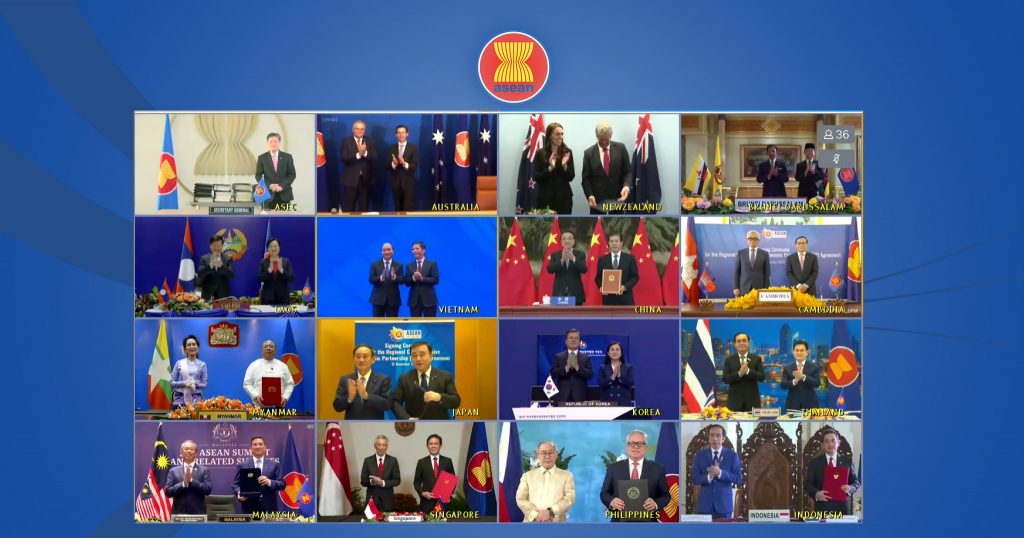Regional Comprehensive Economic Partnership (RCEP)
The RCEP negotiation was formally launched by the Leaders of the 10 ASEAN Member States1 (AMS) and six ASEAN FTA partners2 (AFPs) at the 21st ASEAN Summit and Related Summits in Phnom Penh, Cambodia in November 2012.

The objective of launching RCEP negotiations was to achieve a modern, comprehensive, high-quality, and mutually beneficial economic partnership agreement among the AMS and AFPs. It was viewed as an initiative that will complement the work that was also being undertaken through other plurilateral negotiations such as the Trans- Pacific Partnership and multilateral forums such as the World Trade Organization.
The RCEP negotiations commenced in early 2013, and was concluded in 2020. The Agreement was signed on 15 November 2020. It will enter-into-force once ratified by six AMS and three of the AFPs.
The mega-FTA will promote greater openness, create a more business-friendly environment, encourage closer integration of economies, and provide a more stable and predictable rules based system of trade. The legal text of the Agreement can be downloaded through this link: https://rcepsec.org/legal-text/. A summary of the Agreement can be accessed through this link: https://rcepsec.org/wp-content/uploads/2020/11/Summary-of-the-RCEP-Agreement.pdf.
India has issues that remain unresolved and as such, did not sign onto the Agreement. Given the importance of India as a trading partner of RCEP countries, the FTA remains open for India’s accession and the 15 other countries continue to engage India on its possible return to the RCEP.
[1] Brunei Darussalam, Cambodia, Indonesia, Lao PDR, Malaysia, Myanmar, the Philippines, Singapore, Thailand and Viet Nam
[2] Australia, People’s Republic of China, India, Japan, Republic of Korea and New Zealand


